Berlin Experimental Educational Satellite, Technischen Universität Berlin
BeeSat-1 wurde am 23.09.2009 um 06:21 UTC erfolgreich mit einer PSLV-C14 Rakete vom Satish Dhawan Space Centre (SDSC) SHAR in Sriharikota gestartet.
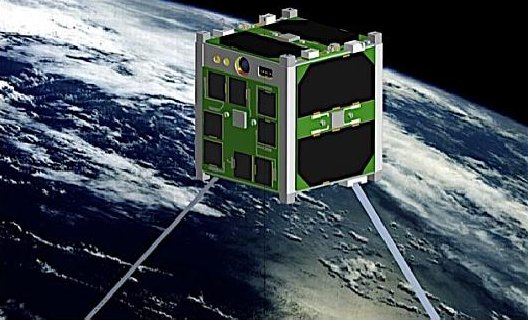
NASA-Catalog: 35933
Downlink
435.950 MHz FM 4k8 GMSK 0.5W, Mobitex
Up- and downlink with picosatellites of the BEESAT series is established by half-duplex GMSK modulated narrow-band radio at 435.950 MHz. The standard baudrate is 4800 bps but can be switched to 9800 bps for increased channel capacity at higher elevations. Each transmission at the higher baudrate is announced by a small 4800 bps header to allow for adaptive receiver re-configuration. The output power of the satellites is 27 dBm (0.5 W) using quarter-wave monopole antennas with toroidal radiation pattern.
Call
DP0BEE
Orbital Parameter
NORAD 35933 COSPAR designator 2009-051-C Inclination 98.344 RA of A. Node 140.267 Eccentricity 0.0005114 Argument of Perigee 129.554 Revs per day 14.53826485 Period 1h 39m 02s (99.3 min) Semi-major axis 7 091 km Perigee x Apogee 710 x 717 km BStar (drag term) 0.001910900 1/ER Mean anomaly 230.550
Mission
BeeSat ist ein Picosatellitenprojekt an der Technischen Universität Berlin. Hauptziel des Projektes ist die Weltraumverifizierung neu entwickelter, miniaturisierter Reaktionsräder und weiterer Technologien für Picosatelliten.
Mit der Bordkamera sollen Bilder von der Erdoberfläche gemacht und dann an die Bodenstation zur Auswertung gesendet werden. Sie dient außerdem als zusätzliches Mittel zur Verifizierung der Lageregelung. Es wird ein Sensor mit 640 mal 480 Pixeln eingesetzt, vor welchem ein Bayer Mosaik Filter sitzt. Die Farbtiefe beträgt 8 Bit pro Komponente und die Bilder werden mit einstellbarem Kompressionsgrad komprimiert.

Mit einer Kantenlänge von nur zehn Zentimetern und einer Gesamtmasse von einem Kilogramm enthält BeeSat neben drei Reaktionsrädern, die im Rahmen eines vom Deutschen Zentrum für Luft- und Raumfahrt (DLR) geförderten Vorhabens in Kooperation mit der Industrie entwickelt wurden, weitere hoch entwickelte Baugruppen, die erstmalig im Weltraum eingesetzt werden sollen. Dazu zählt ein leistungsfähiger und redundanter Bordcomputer für Picosatelliten. Die umfangreiche Flugsoftware läuft auf einem vom Fraunhofer Institut für Rechnerarchitektur und Softwaretechnik (FIRST) bereitgestelltem Betriebssystem, das seit 2001 erfolgreich im Mikrosatelliten BIRD des DLR eingesetzt wird und für Picosatellitenanwendungen angepasst wurde.
Die Lageregelung von BeeSat nutzt neben den Reaktionsrädern ein hoch integriertes System aus neu entwickelten Sonnensensoren, Magnetfeldsensoren, Magnetspulen und Sensoren, die die Drehraten messen. Diese Komponenten werden durch eine aufwändige Lageregelungssoftware gesteuert, die zusätzlich die Bahnposition an Bord bestimmen kann. Damit ist es möglich, die Autonomie des Satelliten hinsichtlich der Kommunikation mit Bodenstationen zu erhöhen und den Betriebsaufwand zu senken.
Status
CW Bake nicht aktiv, Daten nur über Europa
Telemetry
CMX909B – GMSK Packet Data Modem
The CMX909B is a half-duplex Gaussian Minimum Shift Keyed (GMSK) BT=0.3 modem data pump with on-chip packet data handling.
Features
- GMSK Modulation/Demodulation
- On-chip Packet Detection
- Rx or Tx up to 38.4kbits/sec
- Parallel Host Processor Interface
- Full and Short Data Packet Framing
- Low Power 3.0V/5.0V Operation
- Mobitex Compatible including R14N Short Block Frames
- Flexible Operating and Powersave Modes

Mobitex Frame Structure
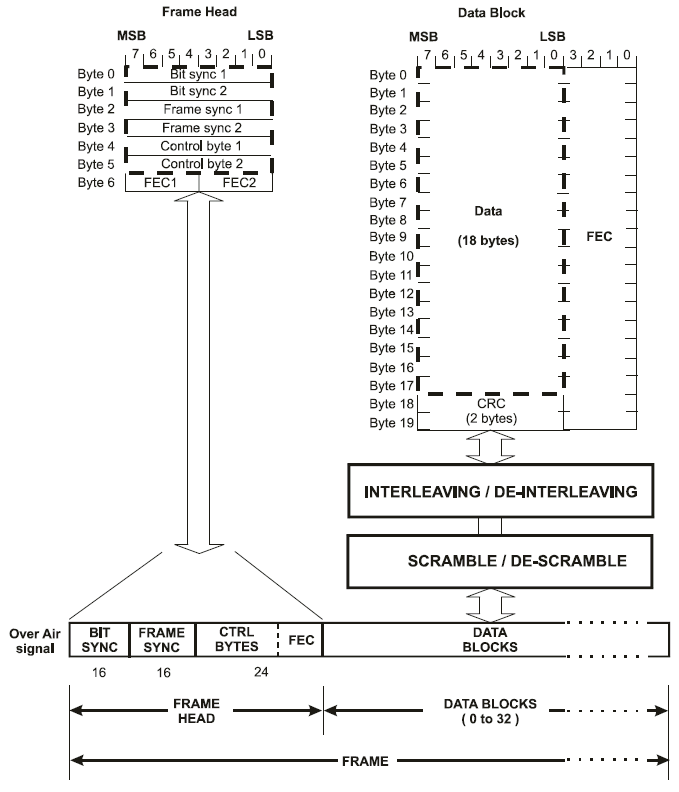
Mobitext over Air format
The Mobitex format for transmitted data is in the form of a Frame Head immediately followed by either 1 Short Data Block or a number of Data Blocks (0 to 32). The Frame Head consists of 7 bytes:
2 bytes of bit sync: 1100110011001100 from base, 0011001100110011 from mobile bits are transmitted from left to right 2 bytes of frame sync: System specific. 2 bytes of control data. 1 byte of FEC code, 4 bits for each of the control bytes: bits 7-4 (leftmost) operate on the first control byte. bits 3-0 (rightmost) operate on the second control byte.
Each byte in the Frame Head is transmitted bit 7 (MSB) first to bit 0 (LSB) last.
The data blocks consist of: 18 bytes of data (Data Block) or 4 bytes of data (Short Data Block). 2 bytes of CRC calculated from the data bytes. 4 bits of FEC code for each of the data and CRC bytes The resulting data block bits are interleaved and scrambled before transmission.
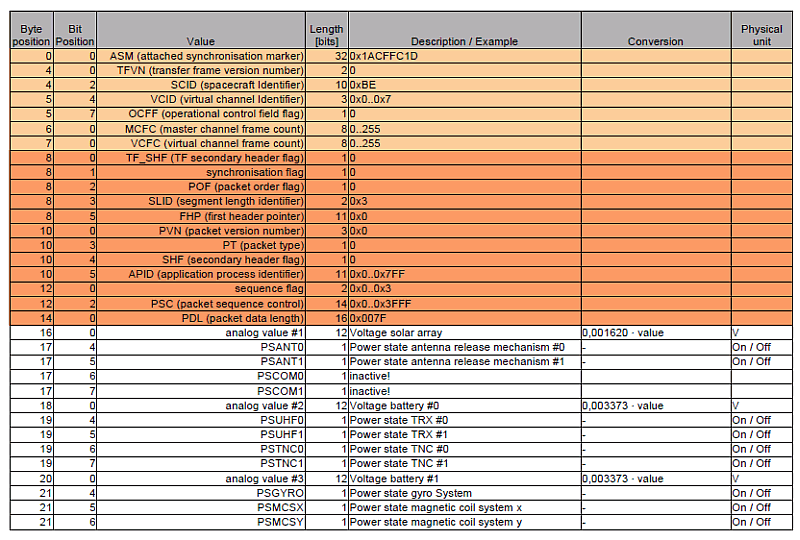
Empfangsberichte
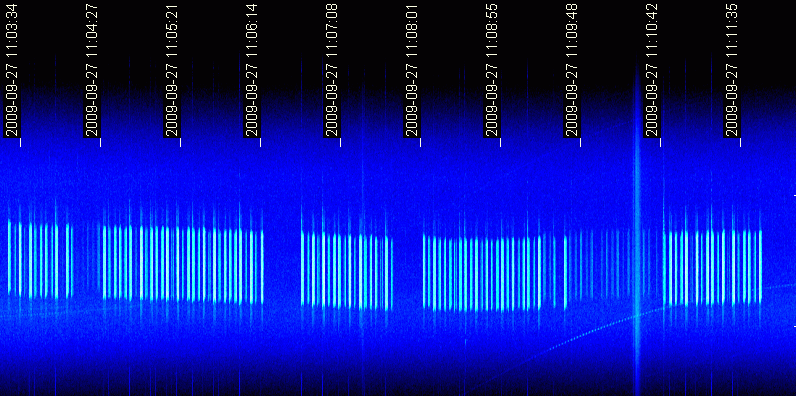
27.09.2009 um 11:03 UTC – starkes 4k8 GMSK Signal
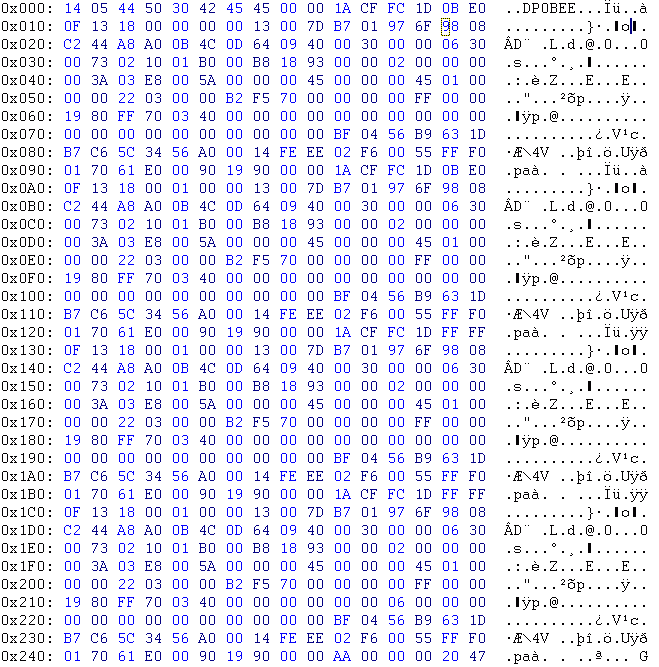
Telemtriepaket am 28.09.2009, 13:30 UTC
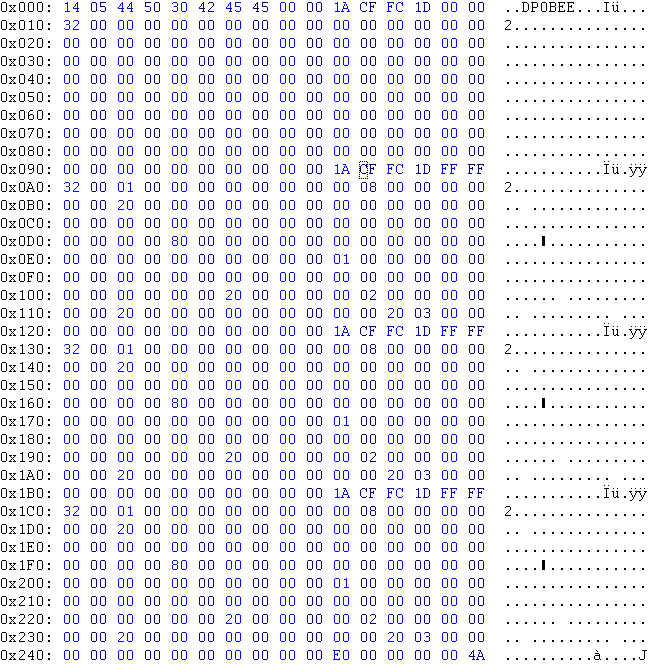
Telemtriepaket am 19.04.2013, 13:10 UTC